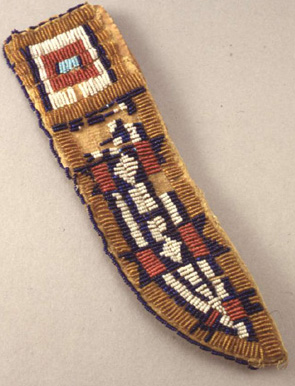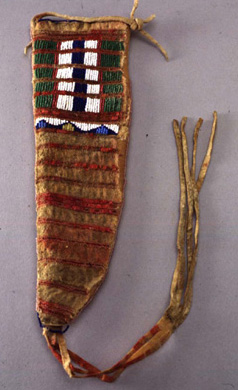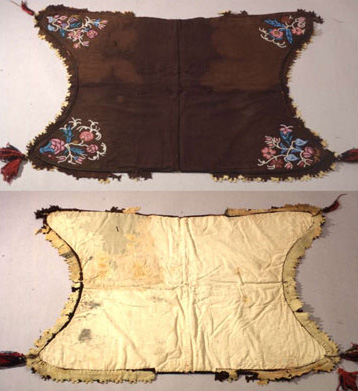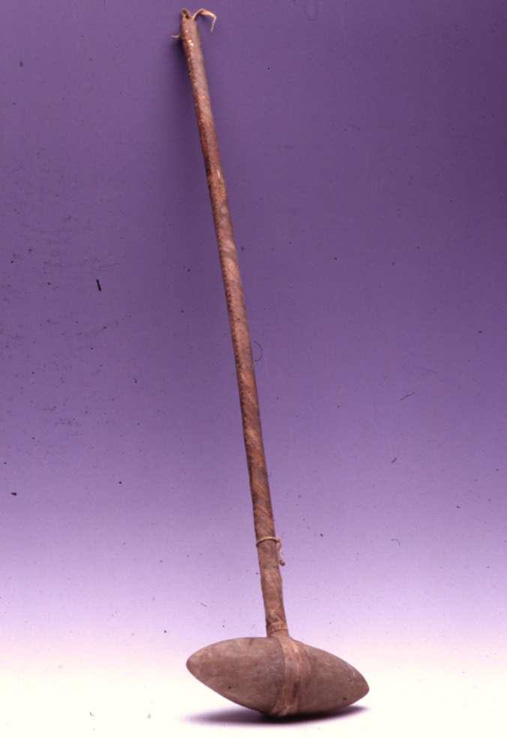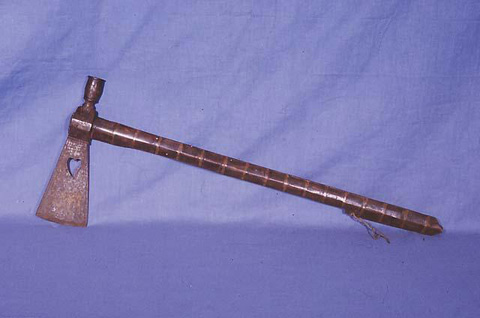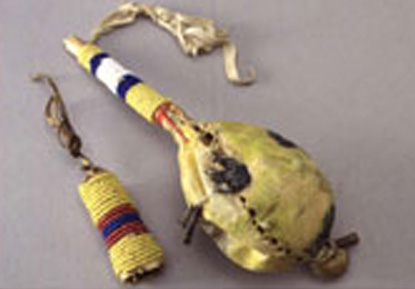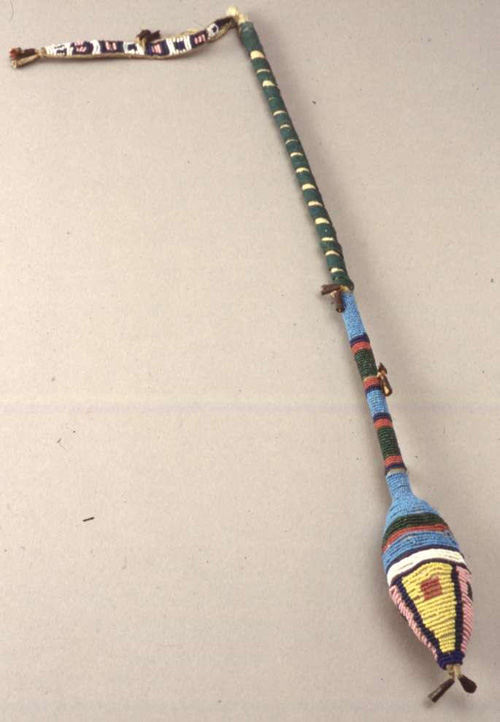
Click here to view image
gun holster
Collezione Missioni Cattoliche Americane 1893
gun holster
XIX - 1891 - 1900
C.A.457
Canada
Il fodero per la pistola non faceva parte della tradizione autoctona, gli Indiani cominciarono a realizzarlo su modello dei foderi dei bianchi ma utilizzando materiali e tecniche propri della loro cultura.
Contenere la pistola
DESO: Scabbard made of five pieces of leather, two for the back, one for the front, one for the bottom and one for the tongue, sewn together. The front surface and tongue are entirely covered with blue, light blue, yellow, red, pink and green glass beads forming concentric diamond geometric patterns bordered by transparent white beads. A border of pink, blue and blue glass beads in alternating bands covers the seams of the perimeter of the scabbard. Opening bordered by a hand-sewn strip of light brown and purple cotton with a button in the centre for closure. On the back, a strip of leather sewn vertically allows the scabbard to be inserted into the belt. Gun holsters were not part of the native tradition; the natives began to make it modeling it after the white men's holsters but using materials and techniques peculiar to their own culture.

